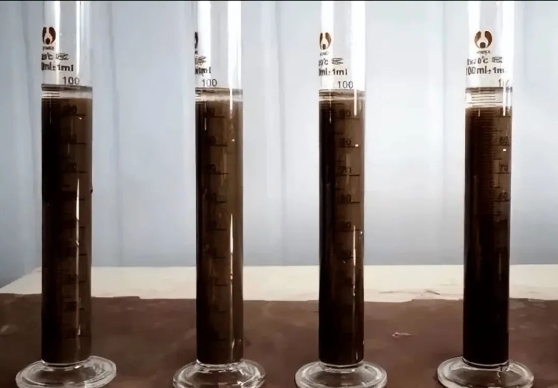What are the important performance indicators of activated sludge?
What are the important performance indicators of activated sludge?
01 Mixed Liquid Suspended Solid Concentration (MLSS) refers to the dry weight of suspended solids contained in a 1L aeration tank mixed liquid, which is an indicator of the amount of activated sludge in the reactor. It includes the oxidation products of microorganisms themselves, organic and inorganic substances adsorbed on sludge flocs that cannot be degraded by microorganisms. Due to the convenience of MLSS in measurement, it is often used as an indicator to estimate the number of microorganisms in activated sludge in engineering. Generally, the sludge concentration in the reaction tank is controlled between 2000~6000mg/L.
02 Mixed Liquid Volatile Suspended Solid Concentration (MLVSS) MLVSS refers to the total weight of organic solids contained in a unit volume of sludge wastewater mixture in an aeration tank, including the first three items of suspended solid concentration in the mixture, measured in mg/L, g/L, etc. In general, the ratio of MLVSS to MLSS is relatively constant, ranging from 0.65 to 0.85. In urban sewage activated sludge systems that mainly treat domestic sewage, the ratio is about 0.75.
03 Sludge settling ratio (SV) Sludge settling ratio refers to the volume ratio of settled sludge to the mixed liquid before settling in a 1L measuring cylinder for 30 minutes. SV can promptly reflect abnormal situations such as sludge expansion, facilitating early identification of the cause and taking measures.

04 Sludge Volume Index (SVI) Sludge volume index refers to the volume of 1g of dry sludge after 30 minutes of static settling of the mixed liquid in the aeration tank, measured in mL/g. SVI=sludge volume after 30 minutes of settling of the mixed solution/sludge dry weight=(SV% × 100)/MLSS. SVI reflects the degree of looseness and coagulation performance of sludge, generally around 50-150. Generally, when SVI<100, the sludge settling performance is better; When 100<SVI<200, the sludge settling performance is average; When SVI>200, the sludge settling performance is poor. The quality of urban domestic sewage is relatively stable, with an SVI controlled at around 50~150. However, the quality of industrial wastewater varies greatly. For example, in some industrial wastewater, COD is mainly dissolved organic matter, which is easily synthesized into sludge. The sludge has low ash content and a large number of microorganisms. Therefore, although its SVI is high, it is not true sludge expansion. On the contrary, if the sewage contains more inorganic suspended solids, the density of the sludge is high, and the SVI is low, but its activity and adsorption capacity may not necessarily be poor. If the SVI value is too high, it indicates that the sludge flocs are loose and have poor settling performance, and are about to expand or have already expanded. The cause must be identified and measures taken. If the SVI is too low, it indicates that the sludge particles are small and compact, with more inorganic substances and fewer microorganisms. At this time, the sludge lacks activity and adsorption capacity.
05 Sludge Density Index SDI Sludge Density Index refers to the number of grams of activated sludge contained in a 100mL mixture after 30 minutes of static mixing, measured in g/mL.
Information source: Theoretical knowledge of water treatment


